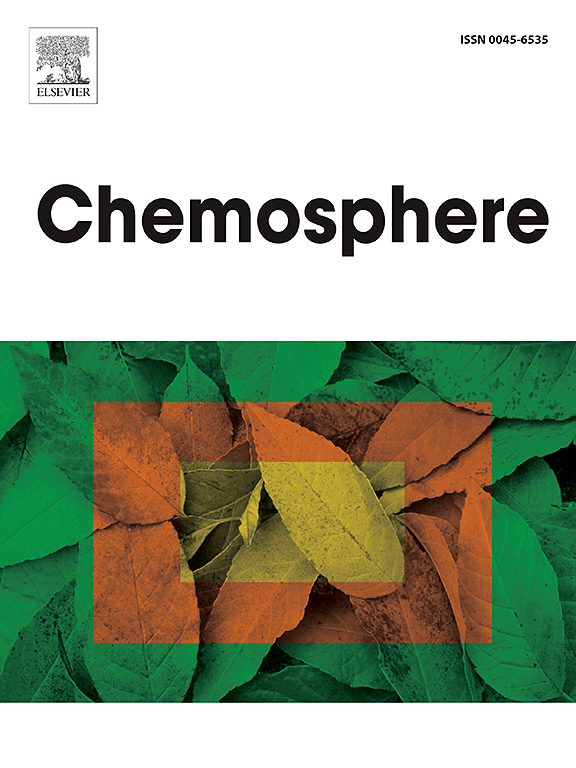金属有机框架传感器在二恶英及类二恶英有机污染物检测中的潜在应用
IF 8.1
2区 环境科学与生态学
Q1 ENVIRONMENTAL SCIENCES
引用次数: 0
摘要
大多数有机污染物对公众健康和环境构成重大风险。特别令人关切的是,环境中的有毒化学品可能导致各种健康失调,包括癌症和哮喘。有各种各样的有机污染物,包括杀虫剂、二恶英、挥发性有机化合物、多氯联苯、芳香烃和多芳香烃。为了确保环境和公众健康免受这些有毒有机污染物的侵害,传感探针的设计与确定其对特定分析物的极限、选择性和灵敏度高度相关。在传感领域,金属有机框架(MOFs)因其能准确、快速地检测有机污染物而受到广泛关注。值得注意的是,mof是一种与金属团簇配合的多孔有机聚合物,可用于检测有机污染物,如有机氯农药、有机磷农药、氨基甲酸酯和挥发性有机化合物。它们独特的特性,包括可调孔隙度、高表面积、复杂的主客体化学和扩展的有序性,使它们有可能成为传感各种物质(如二恶英、二恶英类化合物和不同有机污染物)的良好传感器。本文综述了mof作为检测二恶英和类二恶英有机污染物的良好传感器的最新进展。本文章由计算机程序翻译,如有差异,请以英文原文为准。

Recent potential application of metal organic framework as a sensor for the detection of dioxin and dioxin-like organic pollutants
Most organic pollutants pose significant risks to public health and the environment. Of particular concern, toxic chemicals in the environment may lead to a variety of health disorders, including cancer and asthma. There are various classes of organic pollutants, including pesticides, dioxins, volatile organic compounds (VOCs), polychlorinated biphenyls, aromatic hydrocarbons, and polyaromatic hydrocarbons. To ensure the protection of the environment and public health from these toxic organic pollutants, the design of sensing probes is highly relevant for the determination of their limits selectivity and sensitively towards particular analytes. In the area of sensing, metal-organic frameworks (MOFs) have gained tremendous attention for accurate and prompt detection of organic pollutants. Significantly, MOFs, which are porous organic polymers coordinated with metal clusters, can be employed in the sensing of organic pollutants like organochlorine pesticides, organophosphorus pesticides, carbamates, and VOCs. Their unique properties, including tunable porosity, high surface area, complex host-guest chemistry, and extended order, give them the potential to be good sensors for the sensing of a variety of substances like dioxin, dioxin-like compounds, and different organic pollutant. This review discusses a comprehensive view of the recent development of MOFs as good sensors for the sensing of dioxin and dioxin-like organic pollutants.
求助全文
通过发布文献求助,成功后即可免费获取论文全文。
去求助
来源期刊

Chemosphere
环境科学-环境科学
CiteScore
15.80
自引率
8.00%
发文量
4975
审稿时长
3.4 months
期刊介绍:
Chemosphere, being an international multidisciplinary journal, is dedicated to publishing original communications and review articles on chemicals in the environment. The scope covers a wide range of topics, including the identification, quantification, behavior, fate, toxicology, treatment, and remediation of chemicals in the bio-, hydro-, litho-, and atmosphere, ensuring the broad dissemination of research in this field.
 求助内容:
求助内容: 应助结果提醒方式:
应助结果提醒方式:


